Heraklion has a few things to recommend it – some fabulous restaurants, terrific shopping and the extraordinary Heraklion Archaeological Museum. It is also a short drive to traditional mountain towns, wineries and a number of important archaeological sites.
Crete’s largest city is an industrial and economic centre and a transportation hub. Direct flights from other parts of Europe arrive here and ferries leave the port to a number of islands.
Heraklion is neither beautiful nor is it homely – it is a city built to serve its residents and move tourists around efficiently. The stone walkway out to the beautifully restored Koules Fortress protects the harbour and provides a perfect evening stroll.
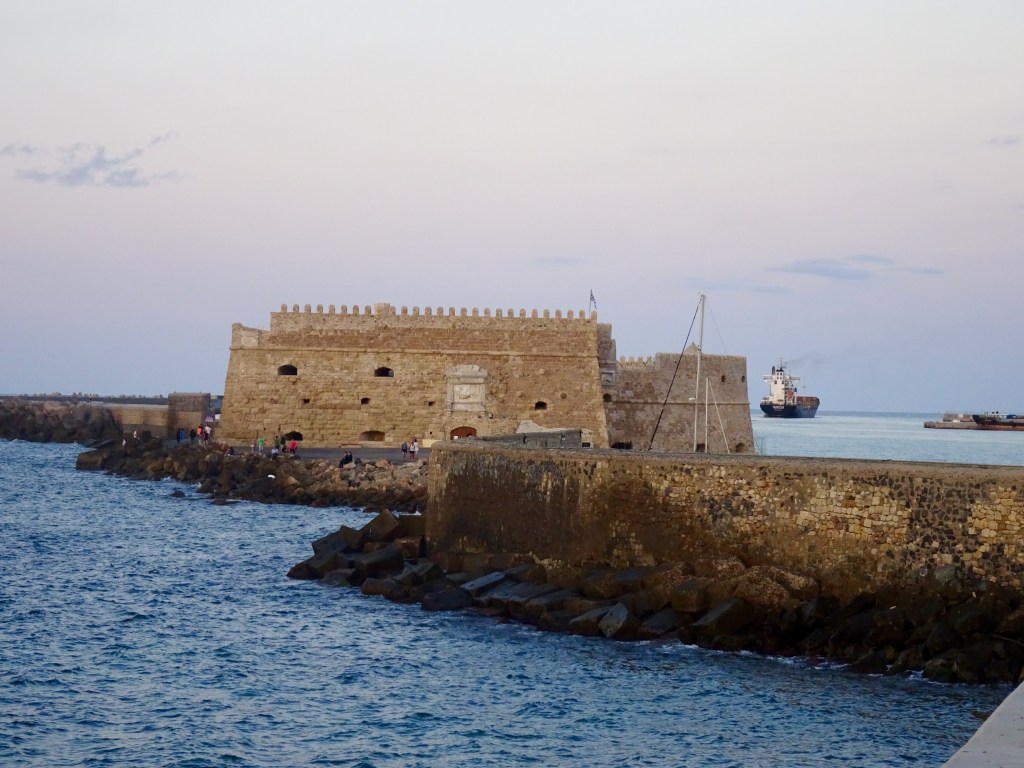
View of the city

Perfect place for quiet contemplation
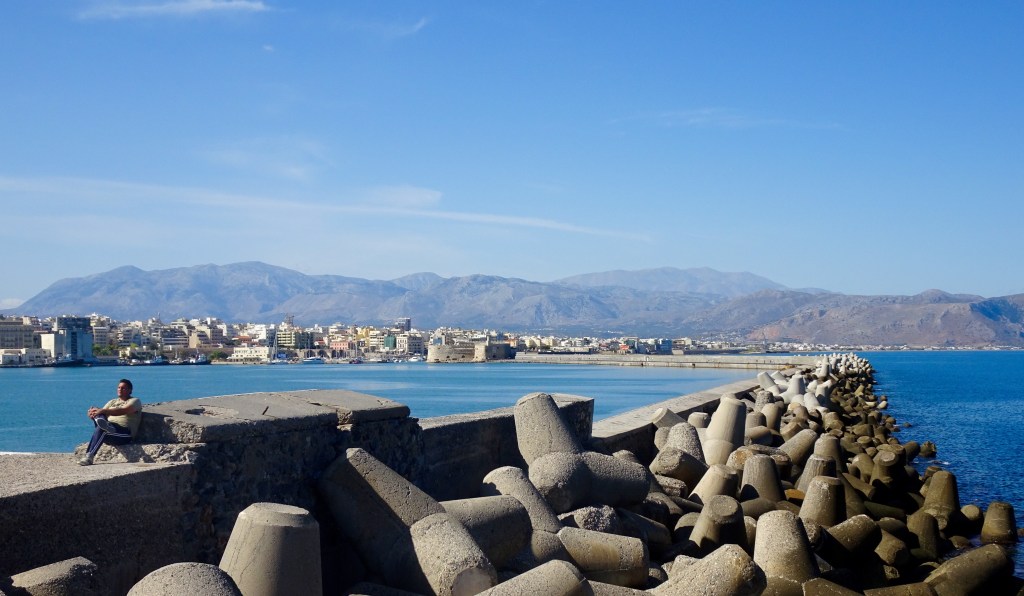
Maybe a less perfect spot to fish? The buckets did not appear to fill up, but perhaps that is not even the point.
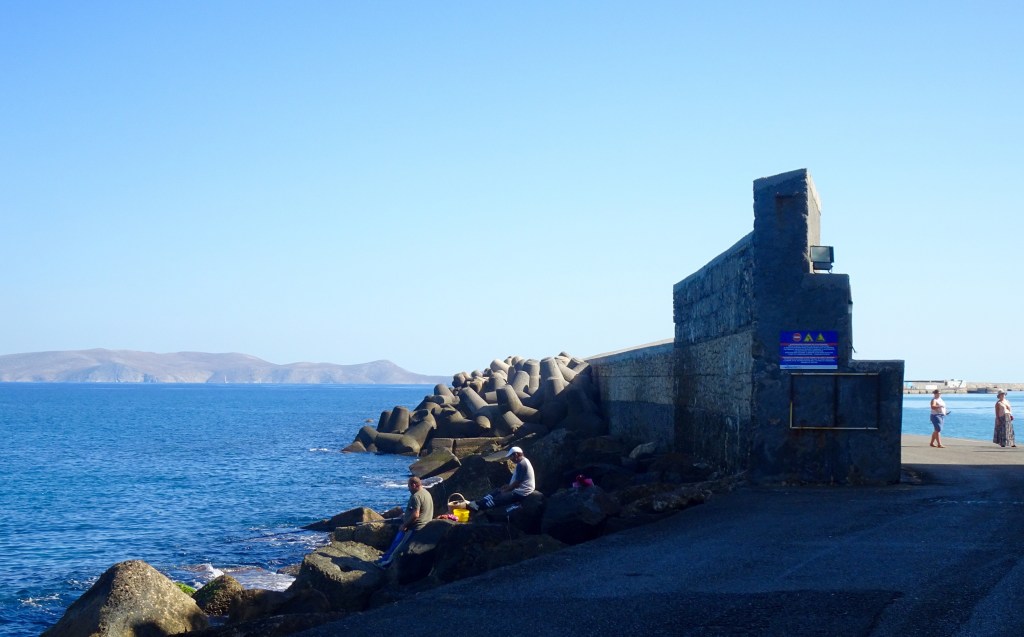
This is the closest we have come to a sunset in Greece. Everywhere we have been so far, the sun has sunk slowly over the mountains. Santorini will be a different story – their sunsets sliding into the sea are famous.
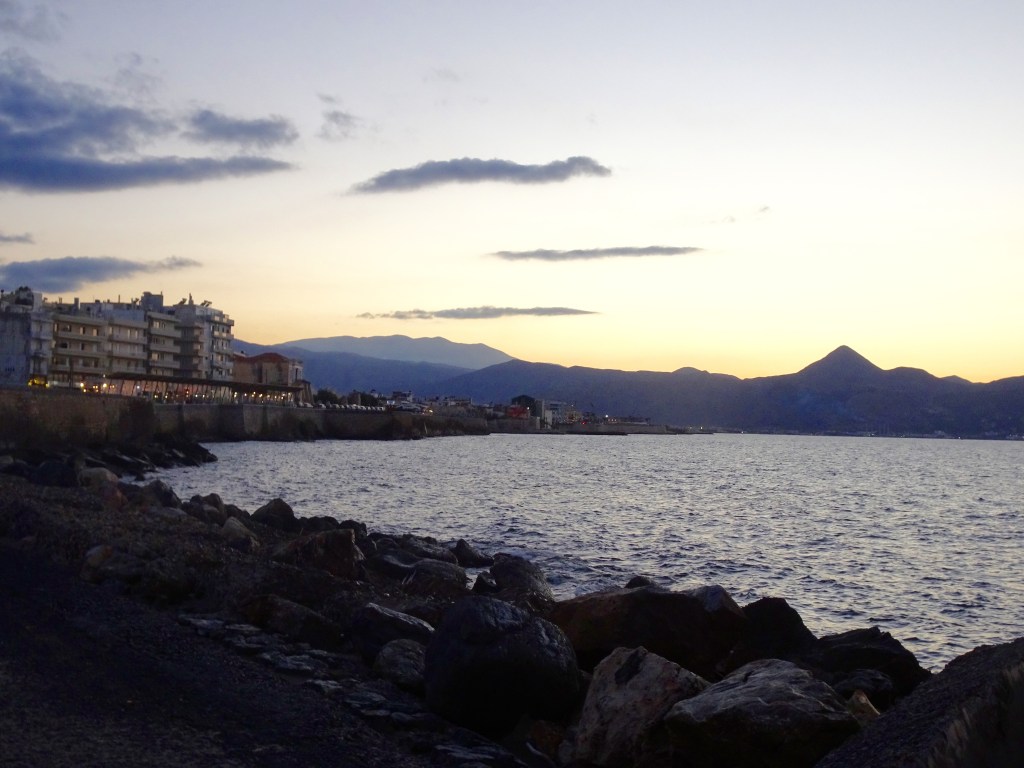
Our friend Linda jokingly asked about the beer-strewn beaches and the marauding gangs of thugs in Greece; she couldn’t believe it is as beautiful as we have portrayed it.
And yes, Greece is that beautiful, but of course I have curated the photos.
Most of our experiences have been really wonderful and most of what we have seen has been memorable. Greece is touted as being a very safe country and we have felt entirely at ease the entire trip.
But…Heraklion has felt a bit different. As soon as we arrived in town we began to search for our apartment. Laden down with bags and following our GPS instructions, we noticed a jittery young man watching us closely. He approached a couple of people who brushed him off, and then he disappeared.
On the same street, we saw this young man, a motionless and pious statue. We saw him again a day later; it was as though he hadn’t moved.

Begging on the streets is common – we have been approached by a number of women with children, and more disturbingly, by young children alone.
These three young boys are a fixture. They approach diners, usually without success and play accordian and sing. Little Greek Oliver Twists.

And then there is this poor fellow, having a nap by the Lion’s Square Fountain.
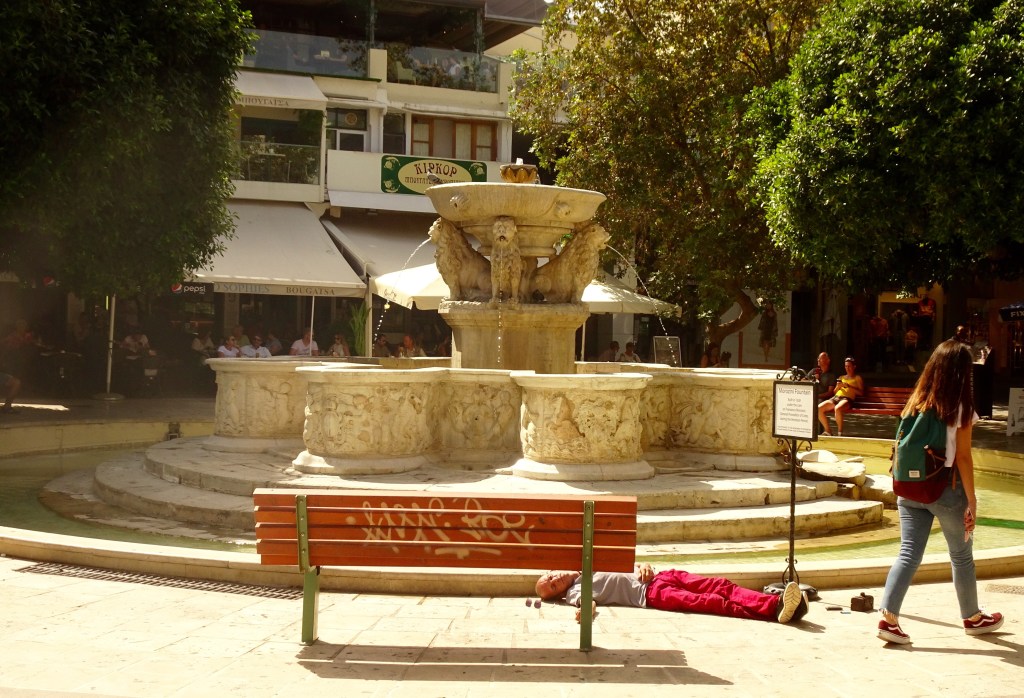
So there you have it, Linda – veering off slightly from the sunny skies and balmy beaches. I’m curious that we did not experience evidence of homelessness or poverty or begging before this, especially not in Athens.
Our new home in Heraklion is a modern, well-furnished apartment located right in the heart of things, but very quiet at night.
This is our view:
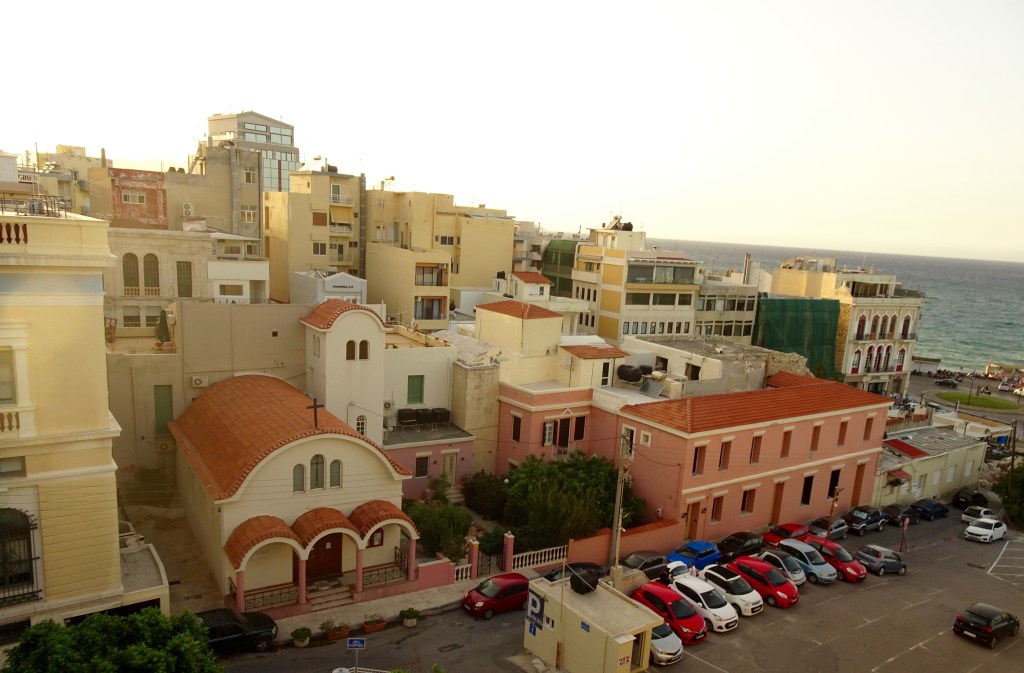
Some street scenes close to us. A pedestrian shopping street.

Tiny alleyways

Typical street with parked cars on both sides and traffic moving through with inches to spare.

Stately banks and municipal buildings
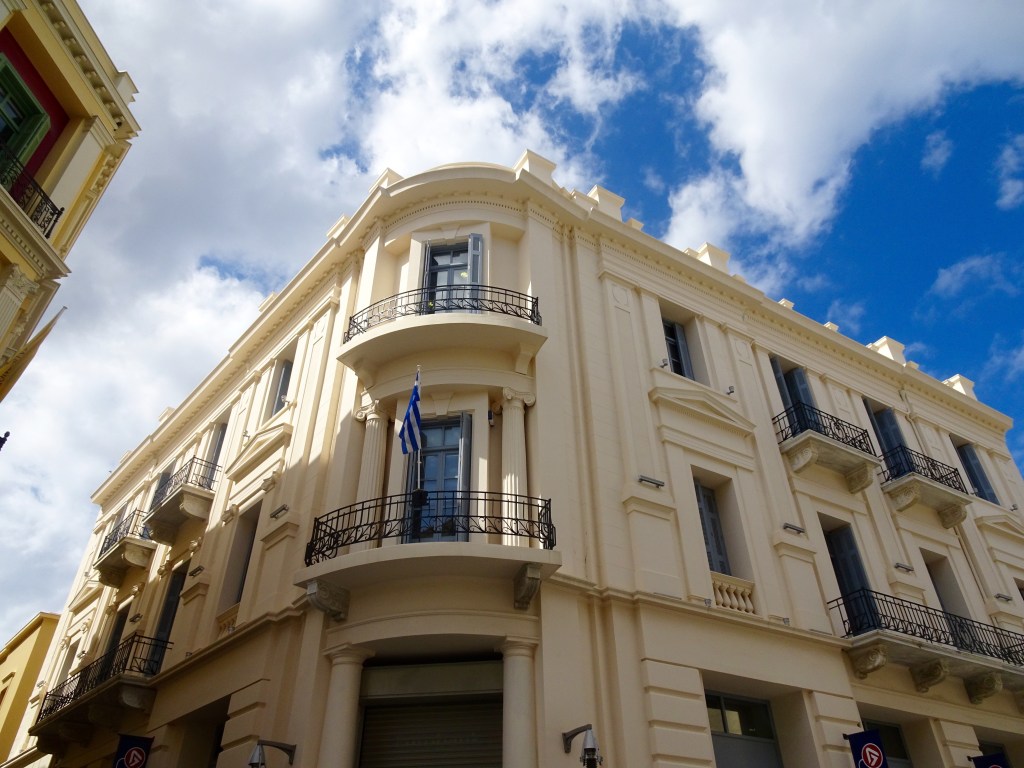
Church of St. Titus

The coffee scene in Greece is a pleasure. We stopped here for lunch and these gentlemen were sitting behind us, nicely dressed and not short on conversation. The man in the blue suit got up to leave first; his suit impeccably pressed and his shoes well-shined. Showing up every day – words to live by.
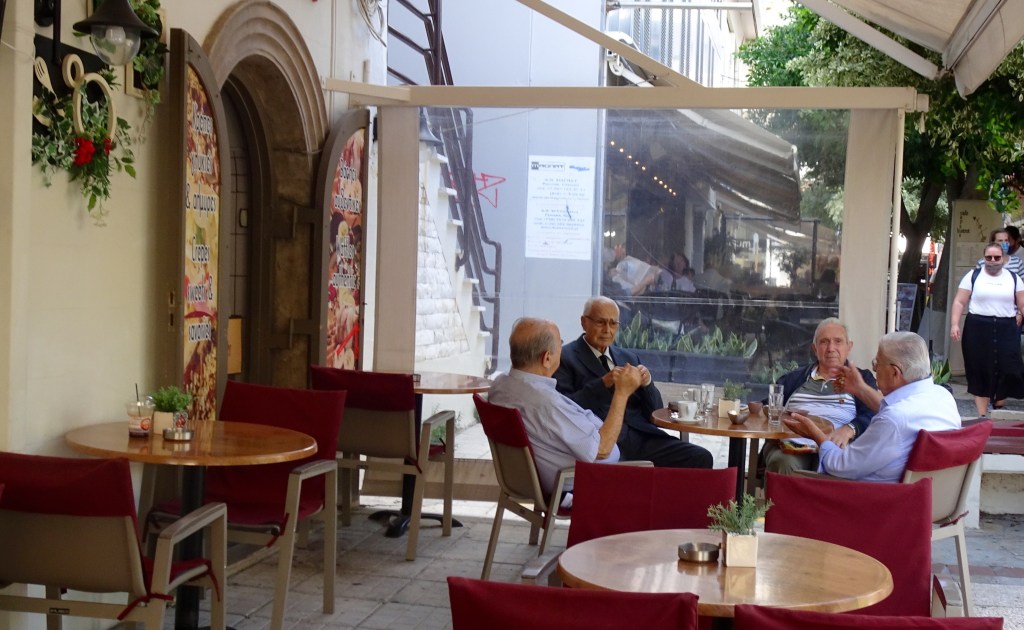
We have eaten very well in Heraklion. We treated ourselves to a nice meal at Peskesi, which is a well-regarded farm-to-table restaurant that highlights Cretan products. We enjoyed a bottle of good local red wine and shared salad, a long-simmered chicken with olives and a dish of snails cooked with tomato and zucchini, which are a Cretan speciality. Service was fabulous and they in turn treated us to raki and a dessert of halvah with shaved almonds and honey. How I wish I had photos to show you, but the colour contrasts weren’t sharp enough (shades of brown and green).
Another restaurant, o Mago, was half the price and just as delicious. Aromatic salad of local herbs and risotto with araki pork and sundried tomatoes. Again, no photos, except for one of the outside tables.

I am including this photo because I find this trend delightfully quirky. Greek women are very body conscious; tops are cropped, dresses cling and pants hug the hips. While there are no shortage of heels and wedge sandals, a common sight is to see a woman with a tiny mini-dress and shoes just like this pair. Sneakers with big thick soles – with the right attitude they look sexy.
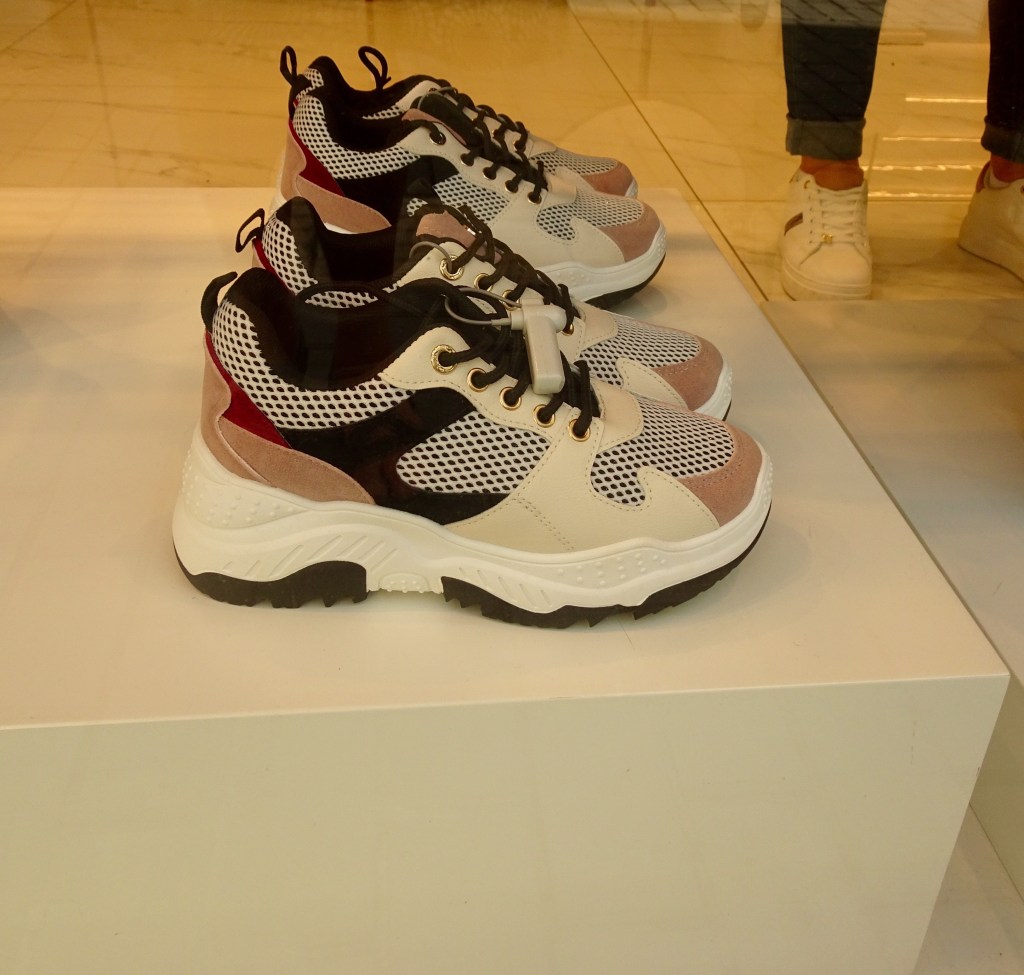
Random street art
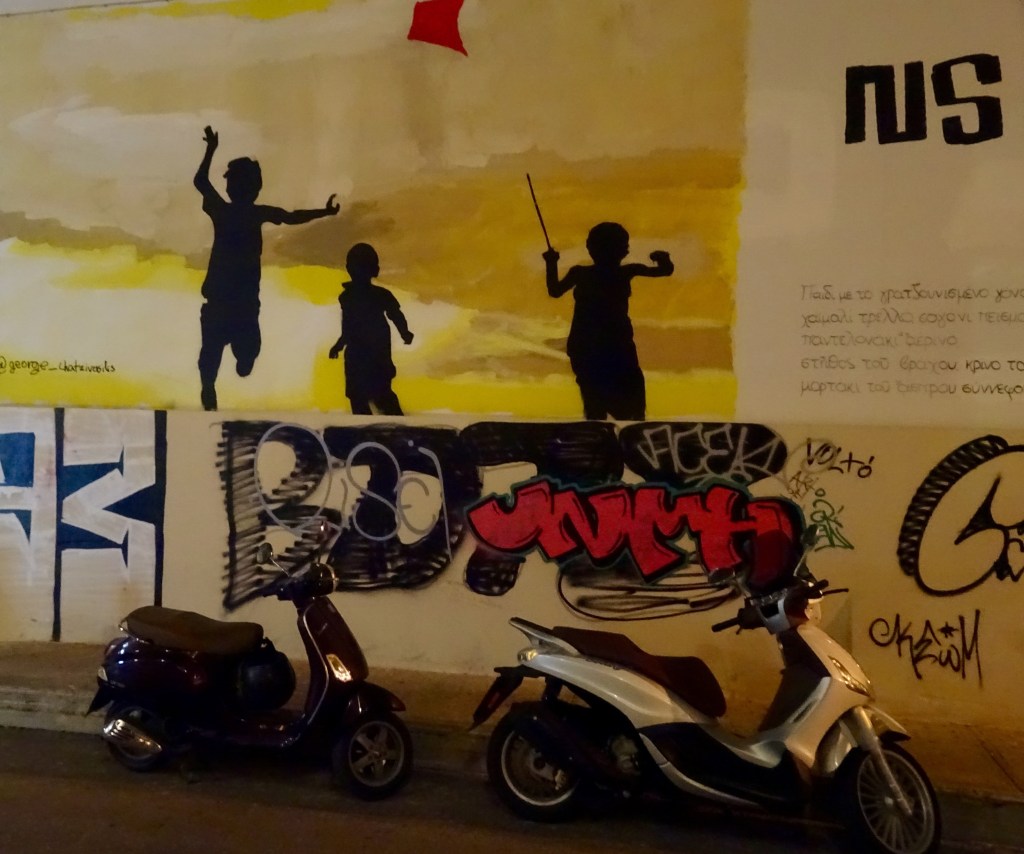
And now – on to the big stuff – where it all began.
The Heraklion Archaeological Museum is the world’s largest and most significant collection of artifacts from Minoan civilization. It is a modern 1930s building that houses artifacts from Neolithic to Roman times; many of them salvaged from the Knossos Palace, just south of the city.
The museum is stunningly laid out and well interpreted. We spent three hours there, and here are just a few of the highlights:
Kamares Ware – a luxury product of the Minoan export trade – 1900-1700 BC

Exquisite Minoan craftsmanship. Stone bull’s head enhanced with seashell, rock crystal and red jasper. Used to pour libations. 1600-1450 BC
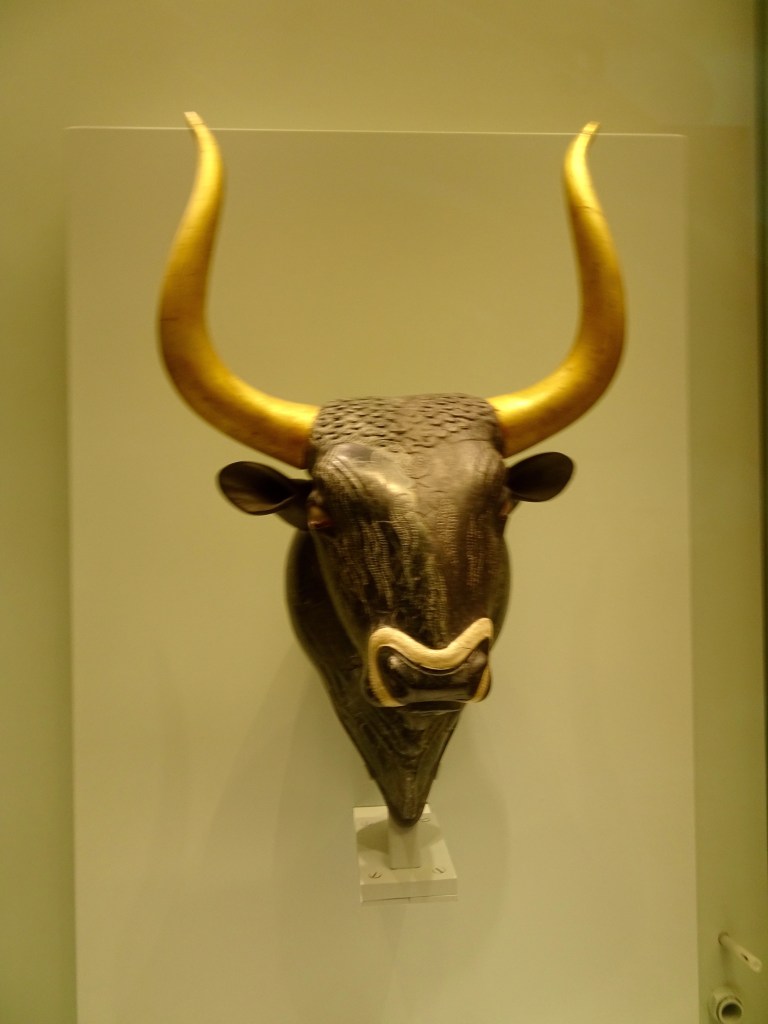
Burial urn. The dead were likely trussed in a fetal position to fit into these large urns. 1700-1450 BC

Fresco depicting Bull-leaping. This was a spectacle in which young athletes of both genders made a dangerous leap over the horns and back of a charging bull. Contests were usually held in large stadiums.
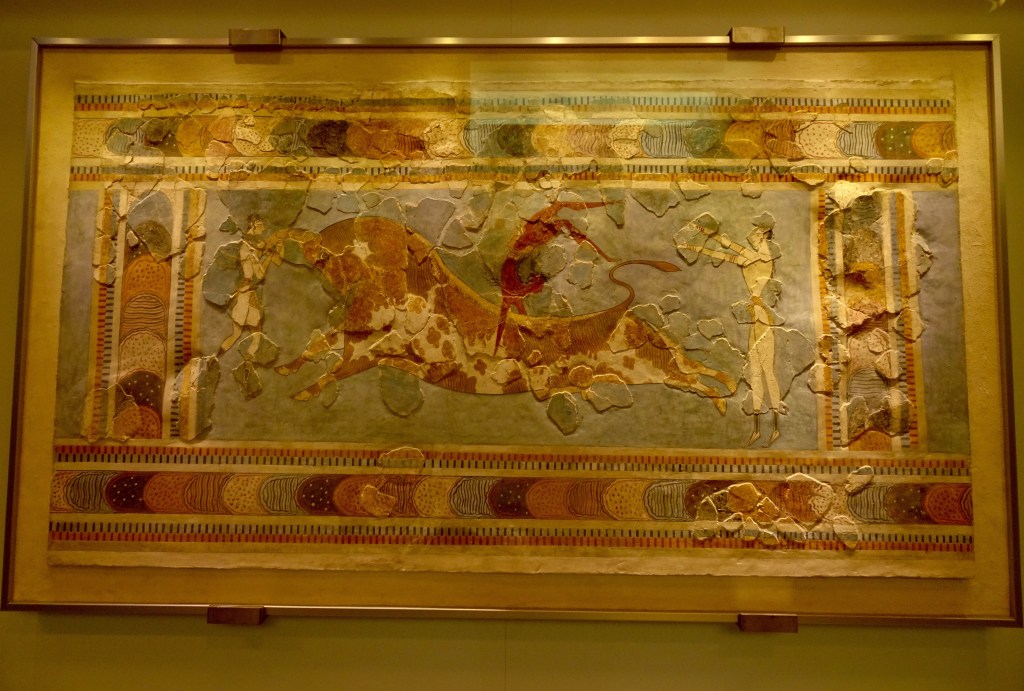
The next day we grabbed a bus out to Knossos Palace, which is about 20 minutes south of the city. It is a beautiful setting, surrounded by mountains and olive groves. We spent a fascinating couple of hours wandering the site.
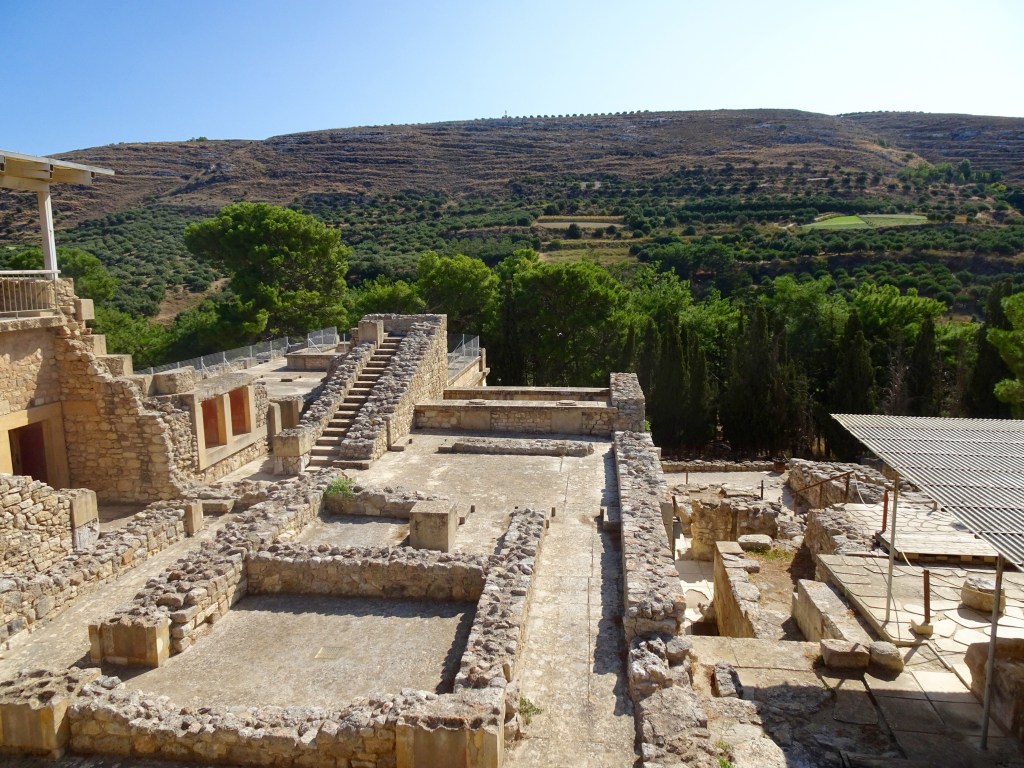
Knossos has a rather troubled history as the first palace was destroyed by an earthquake in 1700 BC and then rebuilt and partially destroyed again between 1500 and 1450 BC. It finally burned down 50 years after that.
Earliest traces of inhabitation go back to 7000-3000 BC. It shows an advanced level of technology attained by the Minoans through the structural and architectural features.

Original excavation began in 1878 by Cretan archaeologist Minos Kalokerinos, and continued between 1900 to 1930 by British archeologist Sir Arthur Evans, who uncovered the entire Palace. As you will see from the photos, many of the frescos have been vibrantly painted and restored to look new, which caused some considerable controversy at the time.
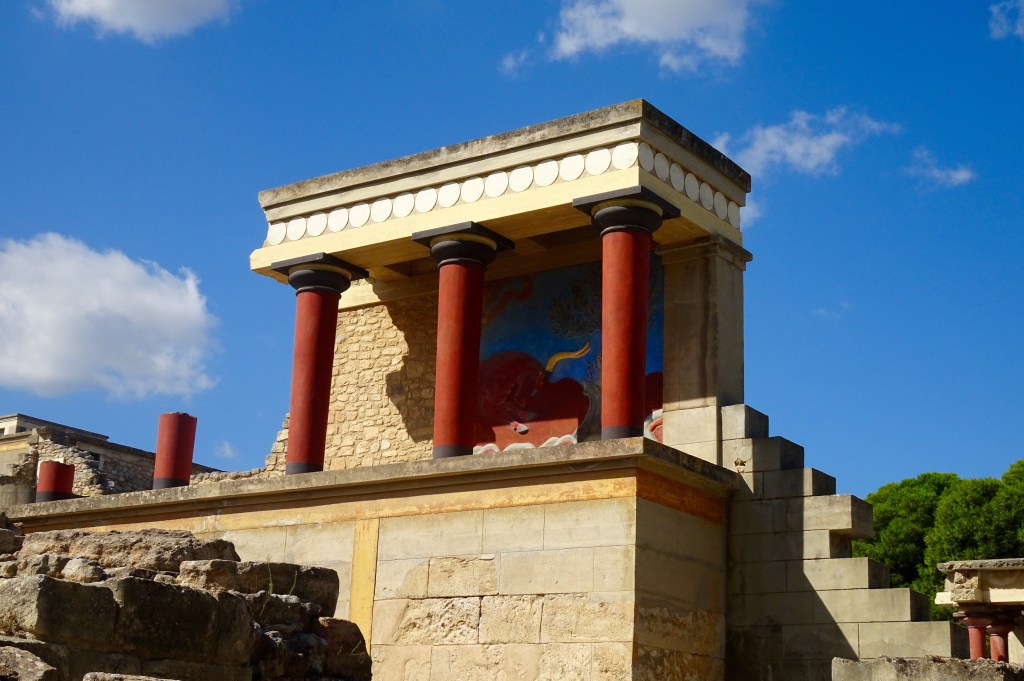
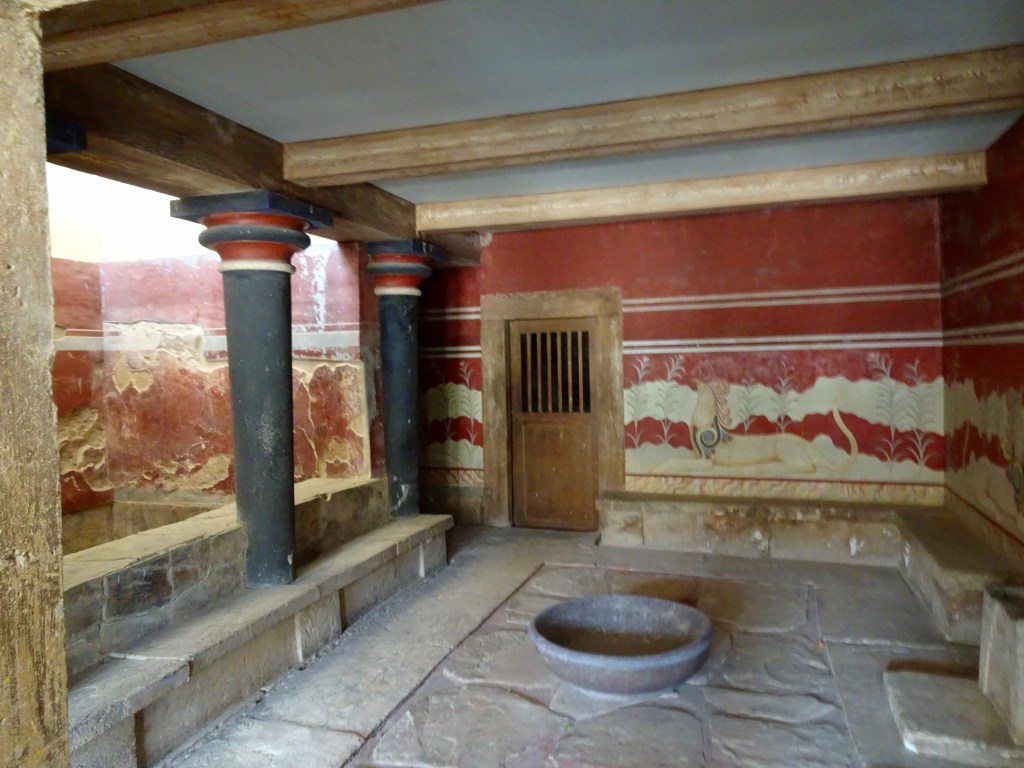

Everything we read about Knossos Palace urged us to arrive precisely at 8:00 am or else arrive the last two hours of the day. Any other time would result in a crush of tourists, long line-ups and sweltering heat.
Because of Covid, we hedged our bets and arrived around 10:00 am. No lineups and no crowds at first, and then the tour buses arrived. Still, it wasn’t bad – it was possible to dodge the groups, keep our distance and enjoy the sites.
None of the groups appeared to be bothered with distancing among themselves, particularly this group.

We met up with them about 15 minutes later. We were taking refuge in the shade at the site of the Theatral Area.
They arrived and made a beeline for us, rightfully wanting to share a bit of shade but literally crowding in beside us, with inches to spare on either side. We made a bit of a huffy show about getting up to leave, but it had no effect.

Since that was our only negative experience with crowds, it is hardly worth mentioning, other than to note that everyone, even tour companies, have a different idea of social distancing.
We arrived in Greece with a pitiable amount of knowledge about Greek history and Greek mythology and we are learning as we go. This much we know is true: we must return to continue our education.
Now, we are off to Santorini tomorrow morning for five days. Prepare for a long posting!
Enjoy your time in Greece!!!
We are all jealous of you!!
Try no to read about the messy situations in Toronto and montreal!!!
Happy travelling
Danielle
LikeLike
We’re now in Santorini and the rest of the world feels very far away!
LikeLike
Just gorgeous! As I said before, I’m green with envy. Sigh!
LikeLike
I think we snuck in here in the nick of time.
LikeLike
The Heraklion Museum looks fascinating, judging by your pictures! I was particularly intrigued with the Kamares ware. What a fine addition to my coffee table!
LikeLike
The coffee cups were gorgeous – truly eggshell and a miracle that they survived. I always wonder how so many ancient artifacts make it – especially for the odd one that was found intact.
LikeLike
Like the others, we envy the sights and the commentary of your time on Crete. The Knossos visit and your experience was memorable for us as we very much enjoyed the day we spent there. The Minoan culture for a interesting learning part of history for us as we also saw their ruins in the eastern coast of Spain on one of our trips. We look forward to reading about your visit to Santorini
LikeLike
We loved Crete and thought of you two often while we were there. The Knossos Palace was so interesting to us because there was still so much intact and it was easy to imagine life there.The museum was outstanding.
LikeLike
Thanks for an interesting read and pictures. We did not get to Greece so really enjoying your blogs. I’m sure it will be great being in Santorini without the usual crowds. Enjoy and keep those blogs coming.
Cheers,
Lyn Morris, Langley, B.C.
LikeLike
We are finding Santorini quite a bit more crowded than we had anticipated – some interesting stories ahead!
LikeLike
We’re so delighted that you tried the Cretan snails! Ours in Chania were excellent but yours sound totally divine. As always, thank you for travelling for those of us who are not. We look forward to your descriptions of Santorini. Stay well.
LikeLike
The snails were an easy choice. We also contemplated slow-roasted young goat, and although I’m sure the meat would have been tender, I don’t think I could have banished the image of a little goat turning for hours on a spit. (I am able to block out other meat-eating images somehow).
LikeLike